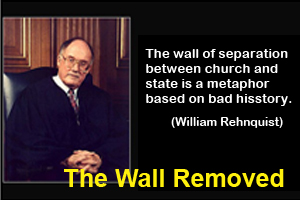

What Is The Treaty Of Rome?
Emily Allen
24 March 2017 • 8:16am
March 25th 2017 marks the 60th anniversary of the agreement that effectively gave birth to the European Union. Here's everything you need to know about the Treaty of Rome.
What is the Treaty of Rome?
The Treaty of Rome established the European Economic Community (EEC) which is seen as a major stepping stone in the creation of the EU.
The EEC established a common market, which gave members the freedom to move goods, services, capital and people, and also a customs union among the founding states.
It was signed in Rome in March 1957 by France, the then West Germany, Italy, the Netherlands, Belgium and Luxembourg - the core of the original EEC, who described themselves as "determined to lay the foundations of an ever closer union among the peoples of Europe.
French delegation head Jean Monnet signs the treaty of the Schuman Plan which created the
European Coal and Steel Community in Paris on March 19, 1951 Credit: AFP/Getty Images
The treaty, which came into force on January 1 1958, is still the legal basis for the workings of EU institutions.
Many people forget that there were actually two treaties signed that day. The second was the European Atomic Energy Community (Euratom) which aimed to develop peaceful applications of atomic energy. This organisation was later absorbed into the European Community structure.
What did the Treaty of Rome say?
The treaty set up an organisation which ensured the establishment and government of the EEC.
Four institutions were created to do this; a Commission, a Council of Ministers, a Parliamentary Assembly (that later morphed into the European Parliament) and a European Court of Justice.
Just six members signed up initially, (known as "the original six") but over the years more and more nations became members through the process of EU enlargement. Today there are 28 member states, although once the UK quits this will fall to 27.
The aim was to transform trade, industry and manufacturing in the EEC and secondly, to work towards a unified Europe.
These days, the Treaty of Rome, which has undergone multiple amendments, is called the Treaty on the Functioning of the European Union.
How the Telegraph covered the signing
The Daily Telegraph reported the signing of the Treaty of Rome in March 1957 with a small story several pages in. Credit: Daily Telegraph
The plan to increase economic integration between European countries came about following the Second World War as nations looked to protect and enhance their economies, raise living standards and reduce the risk of conflict by working together.
Winston Churchill spoke of the need to create a "European Family" or a "United States of Europe" to ensure peace in Europe in a speech in Zurich in 1946.
The first step along this road was to implement the Schuman Plan, the brainchild of French Foreign Minister Robert Schuman who wanted to create a single body to control the production of steel and coal in France and West Germany, and any other European country who wanted to be a member.
Former French foreign minister Robert Schuman. Credit: AP
The European Coal and Steel Community (ECSC) was born in 1951 under the Treaty of Paris, opening up the coal and steel markets in France, Italy, Luxembourg, West Germany, Belgium and the Netherlands for the first time.
The aim was to encourage nations to be dependent on each other, and make war between historic rivals France and Germany "not merely unthinkable, but materially impossible".
In 1955, negotiations began in Messina, Italy which led to the formation of the Treaty of Rome two years later. The aim was to extend the principles of the ECSE and create a common market for all goods and services between members.
That year, the European flag of 12 gold stars on a blue background was created.
European Union flag has become the symbol of Europe.
When did the UK join the EEC?
The United Kingdom joined in 1973, under Conservative Prime Minister Edward Heath. Ireland and Denmark also joined that year taking the number of member nations to nine.
In 1981, Greece joined, followed by Spain and Portugal five years later. Austria, Finland and Sweden were added in 1995.
Ten eastern European nations decided to join the club in 2004, bringing Cyprus, Czech Republic, Estonia, Hungary, Latvia, Lithuania, Malta, Poland, Slovakia and Slovenia into the fold.
Bulgaria and Romania joined in 2007. Croatia became the 28th member in 2013.
Economic to political union
The Maastricht Treaty was signed in 1992 which established the European Union (EU). Instead of just focusing on the economy, co-operation between states was extended to become more political and included justice, social policy, policing, security and some aspects of defence.
The Treaty of Rome remained and still remains the foundation for the EU.
The EEC was renamed the European Community and was absorbed into the EU.
The Treaty of Rome became the Treaty establishing the European Community and in 2009, under the Lisbon Treaty, it changed its name again to the Treaty on the Functioning of the European Union.
Download







